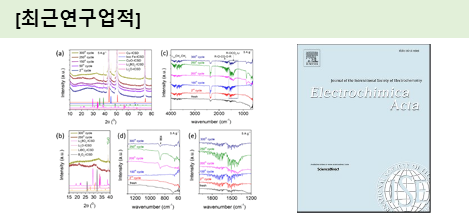|
Abstract
(superscript and subscript cannot be allowed.) |
Samples of core/yolk-shell structured, carbon-coated vonsenite (Fe3BO5) are synthesized by the solid-state method and utilized as conversion-type anode materials. The core consists of vonsenite nanoparticles, while the shell is composed of a defective (partially graphitized) carbon layer. A higher synthetic temperature leads to the formation of larger amounts of metallic impurities as a result of the carbothermal reduction. The electrochemical characteristics of the sample synthesized at a lower temperature (600 ◦C) are better than those of the samples synthesized at higher temperatures and without the carbon coating. This can be attributed to the smaller-sized crystallites having the least amount of metallic impurities and a better-formed solid electrolyte interphase (SEI). This optimized sample demonstrates an outstanding reversible specific discharge capacity of 976 mAh g-1 at a current density of 0.05 A g-1. Long cyclability test at an ultra-high C-rate of 5 A g-1 outlines the critical role of an effective SEI and carbon coating. Remarkably, this sample is able to sustain even further electrochemical abuse, and shows electrochemical activity up to a C-rate of 20 A g-1, thus validating the usefulness of this material as a safe and stable anode for fast charging-discharging Li-ion battery applications. |

